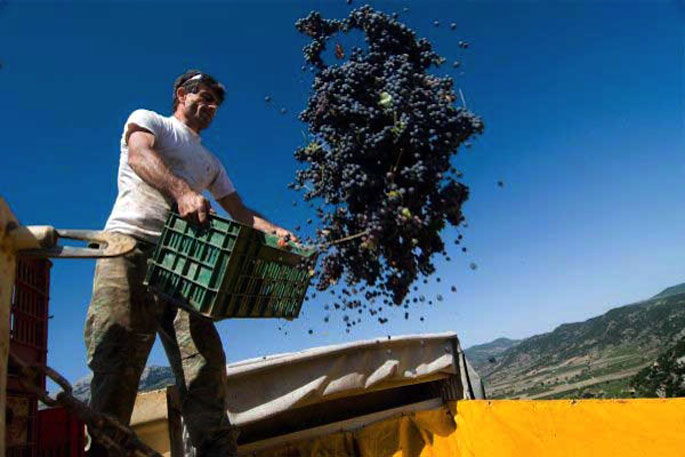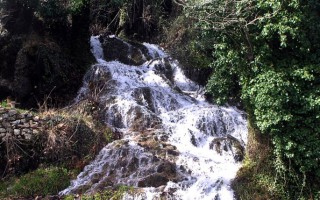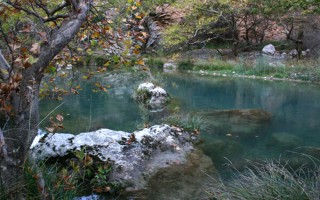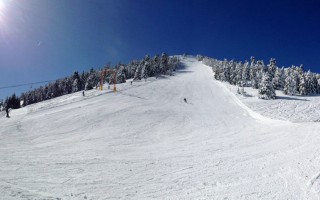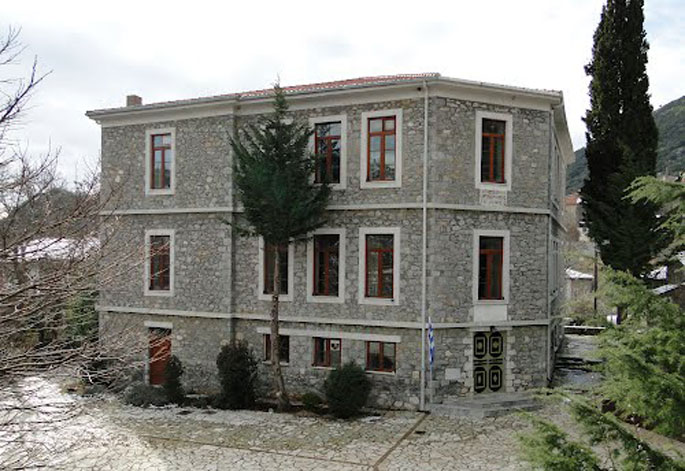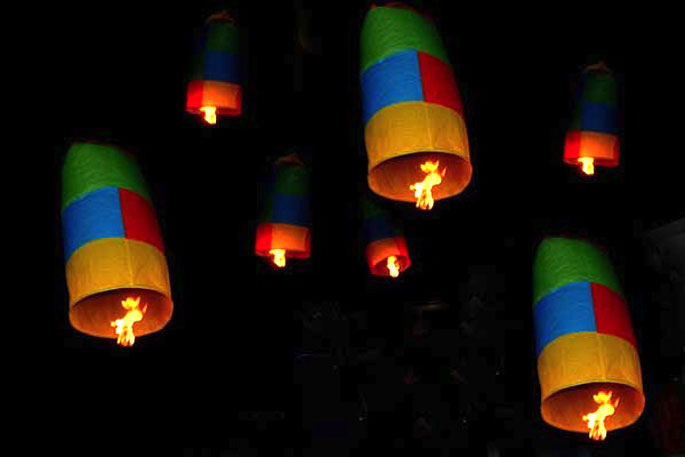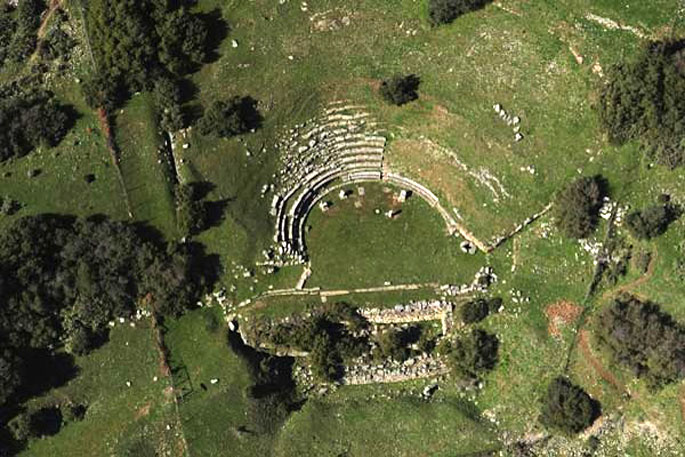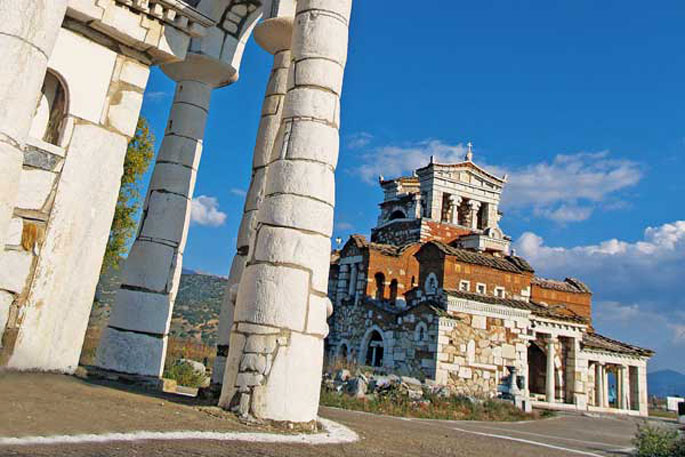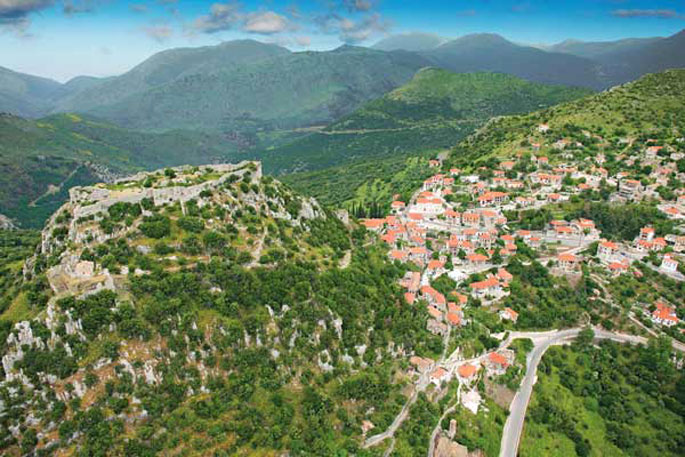The Peloponnese undeniably holds one of the leading positions in terms of wine production in Greece. It’s no coincidence nor a surprise that many of the most domestically and internationally popular wine varieties have their origins in the Peloponnese (the island of Pelops or ampeloessa, according to Homer), since this geographical district has a production of approximately 1,208 labels and a total vine area that covers 29.1% of the Greek wine map. The Wine Producers Association of the Peloponnese, which is based in Tripolis, had the idea of creating the Wine Routes, in order to promote wine tourism, a sector of substantial importance for Greece.
 Arcadia has been famous for the quality of its wine since ancient times. According to Theophrastos, “men lost their minds when they drank it and women got pregnant”. So intoxicating was this wine, that it was also popular among the Gods. Pan, for example, the God of vegetation and fertility, who was known for his womanizing behaviour, as well as Dionysos, the God of wine, who was worshiped through rituals and celebrations of ecstatic inebriation, had Arcadian wine at the top of their preferences.
Arcadia has been famous for the quality of its wine since ancient times. According to Theophrastos, “men lost their minds when they drank it and women got pregnant”. So intoxicating was this wine, that it was also popular among the Gods. Pan, for example, the God of vegetation and fertility, who was known for his womanizing behaviour, as well as Dionysos, the God of wine, who was worshiped through rituals and celebrations of ecstatic inebriation, had Arcadian wine at the top of their preferences.
Even nowadays, Arcadia continues to be an important wine-making centre. One of the most famous vineyards in the country extends across the Mantineian Plateau, where, over a total area of 7,000 square metres, the particularly popular variety, Moschofilero – one of the most aromatic Greek wines – is cultivated. This area has been established since 1971 as a zone of the Mantineia PDO, a region that produces wine with a designation of origin of superior quality. During our tour of the Arcadia Wine Routes we will pass through various places where we will have the chance not only to taste the delectable varieties, but also to admire the unique architecture of the buildings where the wine is produced.
 The first stop is the villages of the municipality of Korythio, which boasts around 5,000 square metres of vineyards. From the old Tripolis – Argos national highway, we head to Steno, which is a village with interesting historical sites. The Church of the Assumption of the Blessed Virgin Mary, which was built in 1847, stands at its centre, while on a nearby hill we see the windmill of Bakopoulos, which dates back to 1850. At the beginning of the 1980s, the team of the Ephor of Antiquities, Dr. T. Spyropoulos, brought to light six thermo-metallurgical kilns from the prehistoric and the late roman years (2500 BC – 500 AD). After the village of Steno we arrive at Agiorgitika, where they also discovered a kiln from prehistoric times, which was the biggest ever revealed. After Agiorgitika, we arrive at the historic Mouchli, where one of the most important castle states of the time held power. The castle of Mouchli was established in 1296 by General Andronikos Asan. It was surrounded by a triple wall, and inside they built the church of the Blessed Virgin Mary Mouchliotissa or the Blessed Virgin Mary of Mouchli, remnants of which still exist. In 1460, the castle was destroyed by the Turks and its residents moved to Constantinople. However, for about a century and a half, it was one of the biggest and most important castles in the Peloponnese. Our tour continues to Partheni. Just before the entrance to the village, we will see three windmills –those of Pantelis, Rasiarmos and Gyftogiannis- while in the village we cannot miss the imposing church of Agios Georgios. Further on, we will see a beautiful lush grove, where the chapel of Agia Kyriaki has been located since 1891. In Partheni we will also have the chance to visit the Folk Art Museum, which is housed in the old elementary school and has exhibits from the wider area. Our next stop is Neochori, which has a lovely main square and a fertile valley where they mainly cultivate potatoes. To the north of the village we will stumble upon the Church of the Assumption of the Blessed Virgin Mary, which -according to an inscription- was established in 1696. At a close distance from Neochori we will see the Monastery of Agios Nikolaos of Varsoi, at an altitude of 1,100 metres, which was built around the 11th century and had a brilliant history up until 1460 when its decadence started. Today, important heirlooms are kept in this monastery, as well as the sacred relics of the martyr Dimitrios, and part of the relics of martyr Pavlos
The first stop is the villages of the municipality of Korythio, which boasts around 5,000 square metres of vineyards. From the old Tripolis – Argos national highway, we head to Steno, which is a village with interesting historical sites. The Church of the Assumption of the Blessed Virgin Mary, which was built in 1847, stands at its centre, while on a nearby hill we see the windmill of Bakopoulos, which dates back to 1850. At the beginning of the 1980s, the team of the Ephor of Antiquities, Dr. T. Spyropoulos, brought to light six thermo-metallurgical kilns from the prehistoric and the late roman years (2500 BC – 500 AD). After the village of Steno we arrive at Agiorgitika, where they also discovered a kiln from prehistoric times, which was the biggest ever revealed. After Agiorgitika, we arrive at the historic Mouchli, where one of the most important castle states of the time held power. The castle of Mouchli was established in 1296 by General Andronikos Asan. It was surrounded by a triple wall, and inside they built the church of the Blessed Virgin Mary Mouchliotissa or the Blessed Virgin Mary of Mouchli, remnants of which still exist. In 1460, the castle was destroyed by the Turks and its residents moved to Constantinople. However, for about a century and a half, it was one of the biggest and most important castles in the Peloponnese. Our tour continues to Partheni. Just before the entrance to the village, we will see three windmills –those of Pantelis, Rasiarmos and Gyftogiannis- while in the village we cannot miss the imposing church of Agios Georgios. Further on, we will see a beautiful lush grove, where the chapel of Agia Kyriaki has been located since 1891. In Partheni we will also have the chance to visit the Folk Art Museum, which is housed in the old elementary school and has exhibits from the wider area. Our next stop is Neochori, which has a lovely main square and a fertile valley where they mainly cultivate potatoes. To the north of the village we will stumble upon the Church of the Assumption of the Blessed Virgin Mary, which -according to an inscription- was established in 1696. At a close distance from Neochori we will see the Monastery of Agios Nikolaos of Varsoi, at an altitude of 1,100 metres, which was built around the 11th century and had a brilliant history up until 1460 when its decadence started. Today, important heirlooms are kept in this monastery, as well as the sacred relics of the martyr Dimitrios, and part of the relics of martyr Pavlos
We then make a visit to the biggest vineyard in Mantineia, known for the production of exceptional and delectable wines, which lies ahead after the village of Zevgolatio. The first stop here is Milia, with its important archaeological remnants. We will see the ruins of a temple dedicated to Ippios Posidon, which was built by Trofonios and Agamidis – famous architects from Viotia. Dr. Spyropoulos revealed an impressive building in a nearby spot, which he identified as the tomb of Epaminondas, the great General and politician from Thiva. A little further on, we see the hill of Gortsouli, around which there are numerous archaeological ruins from the early Helladic and the Hellenistic era. Then we visit Artemision, a beautiful village with impressive stone houses and a scenic bridge which dates back to 1890. Our next stop is Pikerni, with the church of Agios Nikolaos, around which Klimis Gkonopoulos built the homonymous monastery in 1822, as well as the remnants of an ancient castle. The village of Sagka has a spectacular view to the mountains of Mainalo and Lyrkeio. From here, you will see the lovely church of Agioi Theodoroi, with its amazing bell tower, which was built by Tinian craftsmen in 1892, as well as the double-arched bridge of Mpouselitza. The municipality of Mantineia is based in Nestani, where we will see remnants of the walls of the ancient acropolis, the Church of the Annunciation of the Blessed Virgin Mary, as well as many mansions and watermills. We will see, the Monastery of the Blessed Virgin Mary of Gorgoepikoou, which was built around 1080 AD by the Emperor Alexius Comnenus. This monastery houses the miraculous icon of the Virgin Mary, which is believed to be the work of Lucas the Evangelist. After the village of Kapsia, where one of the most notable caves in Greece is located, we make our last stop to the scenic village of Simiades with the Chapel of Agios Prokopios and the archaeological ruins, evidence of past inhabitation.
Merely few of the winery-estates you can visit are the following: Mantineia Winery in Zevgolatio, P. Kalogeropoulos & Co. Winery, also in Zevgolatio, Spyropoulos Estate in Mantineia, Kalogri Estate in Kapsia, Bosinakis Winery in Steno, Boutaris Winery outside of Tripolis, Troupis Winery in Fteri Milias, Boutaris Winery in Milia, Papageorgiou Winery in Artemisio, and many more.
Source: www.mythicalpeloponnese.gr
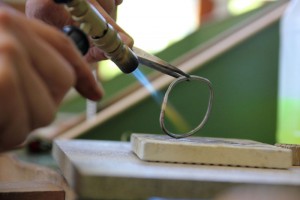 In 1976, a unique school in Greece opened its gates in the picturesque, traditional village of Stemnitsa; it is the Stemnitsa Silver-Gold-Smithery School. Here the students are taught the art of silversmithery, which reached great heights in various areas in Greece, such as Rhodes and Ioannina.
In 1976, a unique school in Greece opened its gates in the picturesque, traditional village of Stemnitsa; it is the Stemnitsa Silver-Gold-Smithery School. Here the students are taught the art of silversmithery, which reached great heights in various areas in Greece, such as Rhodes and Ioannina.
The School was founded by the great craftsmen barba-Lambis Katsoulis and Aristides Vlachogiannis. Today it is housed in a beautiful, traditional two-storey building, recently renovated and fully equipped: it has modern, equipped labs, designing room and computer lab. The course has a duration of two years, with emphasis on applied practice. This public School is open to everyone, on the condition that they have completed at least the first year of the Greek Lyceum. The students are given great facilitations, such as free meals, rent allowance and free transportation to and from their area of permanent residence. Despite the fact that the School operates in an area with difficult access, every year it is full. This means that, apart from being a very beautiful settlement, Stemnitsa is also an attraction point for many young, creative people.
 The Gold and Silversmithing Workshop School of Stemnitsa was established in the 1970s in Stemnitsa, an area with a great tradition in this particular art. It was founded by two great craftsmen, the late Lampis Katsoulis and Aristides Vlahogiannis. In the academic year 2007-2008 it acquired the status of a Public Vocational School and today it is a Public Technical Vocational School. This School is unique in Greece and it attracts students from all over the country to the small, traditional settlement of Stemnitsa, who go there to be taught the art of gold and silversmithing in the most apt of environments and by the most experienced of teachers -the majority of whom graduated from this same School.
The Gold and Silversmithing Workshop School of Stemnitsa was established in the 1970s in Stemnitsa, an area with a great tradition in this particular art. It was founded by two great craftsmen, the late Lampis Katsoulis and Aristides Vlahogiannis. In the academic year 2007-2008 it acquired the status of a Public Vocational School and today it is a Public Technical Vocational School. This School is unique in Greece and it attracts students from all over the country to the small, traditional settlement of Stemnitsa, who go there to be taught the art of gold and silversmithing in the most apt of environments and by the most experienced of teachers -the majority of whom graduated from this same School.
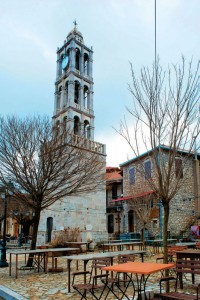 The School is housed in a two-storey traditional building, which was recently renovated by the municipality of Trikolonoi, and offers its students a state-of-the-art infrastructure, boasting three fully-equipped workshops, a design studio and a computer room. The sole prerequisite for enrolment is the completion of at least the first grade of the Lyceum. The School’s curriculum emphasizes on practical training. However, it also includes various general education courses, like foreign languages, IT, literature, religion, mathematics and many more. Students are greatly facilitated on various levels: they receive, amongst other things, a rent allowance, food, the opportunity for field trips and military service deferment.
The School is housed in a two-storey traditional building, which was recently renovated by the municipality of Trikolonoi, and offers its students a state-of-the-art infrastructure, boasting three fully-equipped workshops, a design studio and a computer room. The sole prerequisite for enrolment is the completion of at least the first grade of the Lyceum. The School’s curriculum emphasizes on practical training. However, it also includes various general education courses, like foreign languages, IT, literature, religion, mathematics and many more. Students are greatly facilitated on various levels: they receive, amongst other things, a rent allowance, food, the opportunity for field trips and military service deferment.
Although Stemnitsa is a mountainous and remote village, every year this School is full of students, many of whom have excelled in important competitions. For example, in 2012, the students of the School won the first three prizes and a second distinction in the 23rd competition of Jewellery Design Crafting in the international exhibition KOSMIMA, which took place in HELEXPO in Thessaloniki.
Source: www.mythicalpeloponnese.gr
If you happen to be in Leonidio for Easter, you will witness a truly amazing spectacle, which takes place on the night of the Resurrection. Hundreds of hot-air balloons, made of straw and paper, are set free into the sky when the congregation say “Christ is risen”, filling the night with lights and colours. The origins of this custom, which is not followed anywhere else in Greece, are unknown. Some argue that it is an Asian tradition, which seamen brought back home to Leonidio at the end of the 19th century.
The residents of Leonidio have one more reason to prepare for Easter a little earlier than usual. Every year, on the night of the Resurrection, they revive the tradition of the hot-air balloons, which are set free into the sky when the priest says “the Christ is risen”.
The balloons are made of straw and paper, and they include a special mechanism that allows them to be lifted into the sky. There is an opening on their lower part, inside of which they secure a piece of cloth dipped in oil and petroleum -the so-called “kolymmara”- which, once set on fire, heats the balloon and makes it take off. The balloons’ paper is light, and people use various colours of glue, in order to give the balloons a happy and vibrant effect. The balloons can be as large as two metres and they fly as high as 1,000 metres! When the fire goes out, they cool off and fall back down to earth.
So, few weeks before Easter, each family makes its own balloon, a ritual that every family member is involved in. There is also friendly competition over who will create the most impressive balloon. All five parishes of Leonidio participate in the custom, each one creating up to 100 balloons for that night! The sky is literally filled with these colourful and bright structures, creating a festive ambiance, which is of course accompanied with the fireworks and firecrackers. A few of the hot-air balloons are also freed in the sky in the afternoon, during the Liturgy of Love, from the main square in Leonidio.
The Night of the Balloons is a unique tradition, the origins of which are somewhat lost in the mists of time. This custom doesn’t exist anywhere else in Greece, which means that it’s well worth spending your Easter in Leonidio in order to experience this amazing view from up close.
Source: www.mythicalpeloponnese.gr
Lousios is a Peloponnesian river and a tributary of Alfeios. It is a relatively small river, approximately 25 kilometres long. However the landscape that surrounds it on its both banks is magical. The name of the river has ancient origins. It is said that it was given this name because the newborn Zeus was bathed (Louzo=bathing) in its waters by the nymphs Theisoa, Neda and Agno.
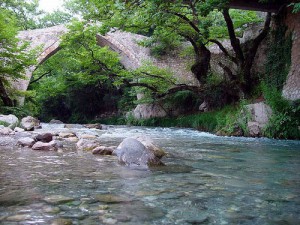 Near Karytaina, River Lousios crosses a gorge of substantial environmental importance, about 26 kilometres from its mouth. The natural beauty of this gorge fully justifies its characterization as a protected zone by the Ministry of Culture in 1997. Its flora is rich, and its fauna includes many species of reptiles, birds and even bats. There are numerous monasteries, churches and hermitages around the river, evidence of the religious life that developed there in the past.
Near Karytaina, River Lousios crosses a gorge of substantial environmental importance, about 26 kilometres from its mouth. The natural beauty of this gorge fully justifies its characterization as a protected zone by the Ministry of Culture in 1997. Its flora is rich, and its fauna includes many species of reptiles, birds and even bats. There are numerous monasteries, churches and hermitages around the river, evidence of the religious life that developed there in the past.
The gorge is ideal for a plethora of activities, like rafting and kayaking. It is a particularly impetuous river and is certainly not recommended for beginners. However, the crossing of the gorge is something suitable for everyone and a truly unique experience.
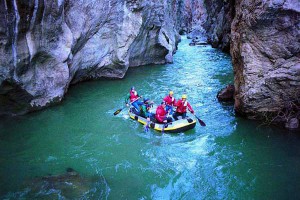 Lousios originates in the location of the ancient town of Theisoa, near the village of Karkalou, as well as further to the north, near Kaloneri, in the location of the church of Agia Paraskevi. These two streams meet up in Karkalou, where Lousios continues its course, to end up after 25 kilometres in Alfeios and flow into somewhere near Karytaina. In its relatively short course, Lousios gives life to the entire surrounding area and dazzles with its natural beauty that includes flora, fauna, unique formations, waterfalls and an incredible gorge.
Lousios originates in the location of the ancient town of Theisoa, near the village of Karkalou, as well as further to the north, near Kaloneri, in the location of the church of Agia Paraskevi. These two streams meet up in Karkalou, where Lousios continues its course, to end up after 25 kilometres in Alfeios and flow into somewhere near Karytaina. In its relatively short course, Lousios gives life to the entire surrounding area and dazzles with its natural beauty that includes flora, fauna, unique formations, waterfalls and an incredible gorge.
 The gorge of River Lousios is one of the most impressive attractions in the prefecture of Arcadia. It is 15 kilometres long and around 2 kilometres wide. On its western side it goes through the National Trail 32, which is part of the European trail E4 GR that starts from Vytina, passing through the villages of Zygovisti, Dimitsana and Paliohori, the Monasteries of Philosophou and St. John the Baptist, then through Karytaina to end up in Gytheio. This entire area is truly amazing. The flora is rich and includes laurels, maples, willows, yews, myrtles, plane trees, elms, poplars, firs, olive trees and many more. The fauna is equally impressive, including various species of reptiles, birds, fish and mammals that live here throughout the year.
The gorge of River Lousios is one of the most impressive attractions in the prefecture of Arcadia. It is 15 kilometres long and around 2 kilometres wide. On its western side it goes through the National Trail 32, which is part of the European trail E4 GR that starts from Vytina, passing through the villages of Zygovisti, Dimitsana and Paliohori, the Monasteries of Philosophou and St. John the Baptist, then through Karytaina to end up in Gytheio. This entire area is truly amazing. The flora is rich and includes laurels, maples, willows, yews, myrtles, plane trees, elms, poplars, firs, olive trees and many more. The fauna is equally impressive, including various species of reptiles, birds, fish and mammals that live here throughout the year.
Religious and ascetic life developed on both sides of the gorge, especially during the Turkish occupation; something obvious from the existence of numerous monasteries, churches and hermitages, like the monasteries of Aimyaloi, Kalamiou, Philosophou, St. John the Baptist and the church of Agios Andreas of Gortyna. The wild beauty of the area combined with the serenity of nature were ideal for anyone who wanted to feel closer to God.
The gorge of River Lousios is perfect for many activities, like canyoning (crossing the river by various means), canoe-kayak, rafting, hiking and trekking. The hiking trails are numerous, each one with something different to offer. In 1997 the gorge was declared as an area of particular archaeological and environmental importance and was placed under the auspices of the Ministry of Culture.
Source: www.mythicalpeloponnese.gr
Every summer, the municipality of Gortynia organizes a series of cultural and athletic events. Within the framework of these summer events, they organize the annual Panhellenic Folk Song Contest in the village of Agia Paraskevi in Lagkadia, aiming to preserve and promote the local traditions, through their most important means of expression: folk music.
This tradition has taken place for 40 consecutive years and is open to amateur singers and musicians, who specialize in folk music, and especially in the old, rare and unreleased songs. Participants compete in the following three categories: 1) Best folk song interpretation by young people up to 18 years old, 2) Best folk song interpretation by adults and 3) Best performance with a traditional musical instrument.
The 39th contest in 2012 was dedicated to the late Domna Samiou, as a tribute to her contribution to Greek folk music.
Source: www.mythicalpeloponnese.gr
Orchomenus was a city in ancient Arcadia, its ruins today situated approximately 30 kilometres from Tripoli, a small distance outside the village of Levidi.
Orchomenus was one of the oldest cities in the region, with evidence of prehistoric inhabitation. It had a large population, as well as a significant presence in the events of the time, and there are testimonies that it was a particularly rich city, since it struck its own coin. Orchomenus was one of the three “large powers” of eastern Arcadia, together with Tegea and Mantineia, with both of which, in fact, it was in constant opposition. Its greatest peak was during the Archaic period, circa the 7th and 6th centuries BC. The city was abandoned during the Roman and Byzantine years, and its inhabitants relocated to the surrounding regions.
The main city is situated on a hill dominating the valley of Levidi and Kandila, an impressive – as well as strategic – position, as it allowed control of the region over a fairly large distance. This ancient city has been excavated and is now open to visitors. The first systematic excavations took place in 1913 by G. Blum and A. Plassart, while during the years 1973-1976 new excavations were carried out by the Supervisory Service of the Prefecture of Arcadia, the 5th Ephorate of Prehistoric and Classical Antiquities, under the direction of its former Head, G. Stainhower. Further works were carried out in 1980 under the direction of former Head, Th. Spyropoulos.
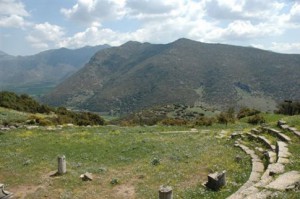 Among the monuments brought to light are a bridge dating to the Archaic period, a prehistoric tomb, the ancient agora, the bouleuterion, a temple to Artemis Mesopolitis, its walls, and most importantly the ancient theatre, one of the largest theatres of the ancient times, with a capacity for 4,000 people, built during the Hellenistic period, in the 3rd century BC. This theatre, built at an altitude of 800 metres, offered a unique view. It was used both for plays and for games in honour of the god Dionysus. An interesting fact is that, as this theatre was built on a steep slope, it had a system for draining rainwater, which consisted of separate stone drainage pipes.
Among the monuments brought to light are a bridge dating to the Archaic period, a prehistoric tomb, the ancient agora, the bouleuterion, a temple to Artemis Mesopolitis, its walls, and most importantly the ancient theatre, one of the largest theatres of the ancient times, with a capacity for 4,000 people, built during the Hellenistic period, in the 3rd century BC. This theatre, built at an altitude of 800 metres, offered a unique view. It was used both for plays and for games in honour of the god Dionysus. An interesting fact is that, as this theatre was built on a steep slope, it had a system for draining rainwater, which consisted of separate stone drainage pipes.
Source: www.mythicalpeloponnese.gr
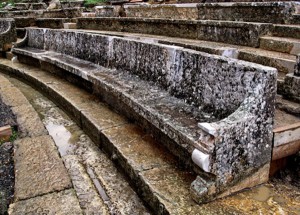 Three kilometres outside modern-day Megalopoli, in close proximity to the road leading from Megalopoli to Karytaina, lies the archaeological site of Megali Polis, one of the most magnificent cities of ancient Arcadia which, despite this, did not manage to survive for more than two centuries. The archaeological site contains ruins of the ancient agora, the Thersileion parliament hall on the north side, with a capacity of approximately 16,000, as well as the largest and oldest theatre of Ancient Greece, situated across from the agora and connected to it by a bridge.
Three kilometres outside modern-day Megalopoli, in close proximity to the road leading from Megalopoli to Karytaina, lies the archaeological site of Megali Polis, one of the most magnificent cities of ancient Arcadia which, despite this, did not manage to survive for more than two centuries. The archaeological site contains ruins of the ancient agora, the Thersileion parliament hall on the north side, with a capacity of approximately 16,000, as well as the largest and oldest theatre of Ancient Greece, situated across from the agora and connected to it by a bridge.
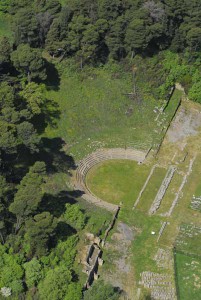 The theatre was constructed by Polycleitus of Argos, circa 370 BC, and had a capacity of around 20,000 spectators and perfect acoustics. The reason its proportions were so large was that, in addition to theatre, it also hosted meetings of a political nature between the 40 Arcadian cities that comprised Megalopolis, which could be attended by any interested citizen. A wooden stage with wheels was used for plays, which was kept at the scenotheque (the stage store) and would be pulled out to the theatre whenever needed. The theatre’s peak is placed in the 3rd century BC, and coincides with the peak period of Megali Polis. The theatre first started to come to light in the late 19th century. The British Institute started excavations in the region in 1890-1891, which revealed the proscenium, orchestra, part of the proedria, the analemma walls of the parodoi, the foundations of the scenotheque and the lower stone seats. Research is still underway at the Thersileion parliament hall site, and new results are expected. The ancient theatre of Megalopolis is part of a European programme financed by UNESCO. The goal is to carry out the necessary restoration works that will further highlight the importance of this ancient monument.
The theatre was constructed by Polycleitus of Argos, circa 370 BC, and had a capacity of around 20,000 spectators and perfect acoustics. The reason its proportions were so large was that, in addition to theatre, it also hosted meetings of a political nature between the 40 Arcadian cities that comprised Megalopolis, which could be attended by any interested citizen. A wooden stage with wheels was used for plays, which was kept at the scenotheque (the stage store) and would be pulled out to the theatre whenever needed. The theatre’s peak is placed in the 3rd century BC, and coincides with the peak period of Megali Polis. The theatre first started to come to light in the late 19th century. The British Institute started excavations in the region in 1890-1891, which revealed the proscenium, orchestra, part of the proedria, the analemma walls of the parodoi, the foundations of the scenotheque and the lower stone seats. Research is still underway at the Thersileion parliament hall site, and new results are expected. The ancient theatre of Megalopolis is part of a European programme financed by UNESCO. The goal is to carry out the necessary restoration works that will further highlight the importance of this ancient monument.
Source: www.mythicalpeloponnese.gr
The Festival of Tsakonia took place for the first time during the summer of 2011 in Leonidi, in the prefecture of Arcadia, under the auspices of the municipality of South Kynouria. Also known as “Melijazz”, it combines the unique culinary traditions of Tsakonia with musical sounds from around the Mediterranean. Aubergine is the star of the local cuisine and is used in various recipes, creating unprecedented taste sensations. Jazz, ethnic and Latin music complement the festive ambiance in the traditional, picturesque settlement of Leonidi, together with a broad Greek music repertoire. Mediterranean flavours, singing and dancing are all combined in this unique festival, which is not to be missed!
Source: www.mythicalpeloponnese.gr
Mantineia was one of the largest and most significant cities in antiquity and it became an important centre of historical developments not only in the area of Arcadia, where it belonged, but in the whole of Greece. The ancient city is located 14 kilometres from Tripoli, in the area called Paleopoli. The first excavations began at the end of the 19th century and around 1960 other parts of the city came to light.
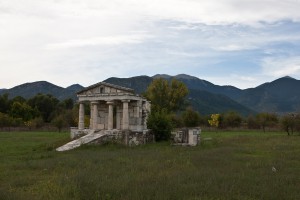 The most important monuments that the visitor to the archaeological site of Mantineia can see are the ancient theatre, the Bouleftirion, parts of the ancient Agora, Roman baths and a temple which was dedicated to Artemis Mesopolitis. Across the archaeological site one can also visit the Christian church of Aghia Fotini, a combination of Byzantine and Greek architecture, the aesthetics of which are a source of conflicting opinions.
The most important monuments that the visitor to the archaeological site of Mantineia can see are the ancient theatre, the Bouleftirion, parts of the ancient Agora, Roman baths and a temple which was dedicated to Artemis Mesopolitis. Across the archaeological site one can also visit the Christian church of Aghia Fotini, a combination of Byzantine and Greek architecture, the aesthetics of which are a source of conflicting opinions.
Regarding the preserved monuments, our best source of information is the traveller Pausanias, who visited the city around 170 A.D. and refers to them in detail. The archaeological site begins from the hill Gortsouli, where the acropolis of ancient Mantineia was located. From the top of this hill the visitor has a great, panoramic view of the whole valley of Mantineia, with the remains of the ancient city.
Video by fabdrone
 The ancient city of Mantineia is situated approximately 14 kilometres north of Tripoli, at Palaiopoli, one of the largest, most important and best preserved cities of the ancient world. Pausanias reports that Mantineas was the city’s legendary settler, grandson of Pelasgus, primogenitor of the Arcadians. The city is also mentioned by Homer, who calls it Mantinei eratinei, meaning “beloved land”. As this ancient reference reveals, Mantineia was a city already at its peak during the Archaic period, playing an important role in the events, not only of Arcadia, but of the entire ancient world.
The ancient city of Mantineia is situated approximately 14 kilometres north of Tripoli, at Palaiopoli, one of the largest, most important and best preserved cities of the ancient world. Pausanias reports that Mantineas was the city’s legendary settler, grandson of Pelasgus, primogenitor of the Arcadians. The city is also mentioned by Homer, who calls it Mantinei eratinei, meaning “beloved land”. As this ancient reference reveals, Mantineia was a city already at its peak during the Archaic period, playing an important role in the events, not only of Arcadia, but of the entire ancient world.
The first excavations in the region started between 1887 and 1889 by the French Archaeological School, led by Gustave Fougères, and they brought to light the Ancient Agora. Later excavations were undertaken in 1960 by the Greek Archaeological Service and revealed even more relics of this glorious city. The testimony of traveller Pausanias, who visited the city around 170 AD, helped in the identification of these discoveries as the main temples and public buildings of the city.
Mantineia had an impressive fortification wall, the agora, a theatre from the early Hellenistic times, a bath complex dating to the Roman period, the bouleuterion, a temple of Artemis Mesopolitis, as well as two temples which were possibly related to the worship of Zeus and Hera. Residences and tombs have also been located, but they are still well protected underground. Close to the archaeological site lies the Christian church of Saint Foteini, which combines Byzantine and Greek architecture. North of the ancient city, at a distance of approximately one kilometre, is the hill of Gortsouli, which has been identified as the administrative centre of the ancient city, known in ancient texts as Ptolis. A temple was discovered on this hill, which marks the beginning of the archaeological site.
Mantineia had significant presence and power in ancient times, also owing to its strategic position. Its perpetual competitor was Sparta; both cities claiming control of the wider region. This competition resulted in the city’s first destruction in 385 BC, by Agesipolis, King of Sparta. The residents then abandoned their destroyed homeland and scattered into the surrounding areas until 370 BC, when the city was re-established by the Theban general, Epameinondas. In 223 BC the city was destroyed once again by the Macedonian king Antigonos C who, together with his Achaean allies, conquered and looted the city, and massacred its population. The city was again rebuilt in 221 BC under a different name: it was named Antigonia, from the Macedonian king. It kept this name for some centuries, before the Emperor Hadrian gave it back its original name.
Source: www.mythicalpeloponnese.gr
Every August, hundreds of people visit the picturesque and traditional settlement of Karytaina on the occasion of the bazaar which is annually organized by the local women’s association. This bazaar usually lasts for 3 days and gives the women of Karytaina the opportunity to present various traditional products, like weavings, embroideries, as well as food and pastries, all handmade with love and care. The association also has a store in the centre of the village, which is open throughout the year and sells handmade products of exceptional quality.
Source: www.mythicalpeloponnese.gr

